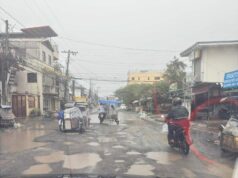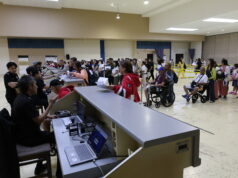But, as proven by a cooperative in Tuguegarao City, the carabao hide is also for chicharon, which is the Filipino term for the Spanish chicharron. Chicharon (or tsitsaron) is generally known in the country as pork crackling.
This carabao hide chicharon is marketed as “Chicha-rabao”.
“We processed an average of 2,100 kilograms of carabao’s hide a week for our Chicha- rabao,” said Arturo Tabbu, general manager of the Lighthouse Cooperative. “It is distributed Luzon-wide and has also markets in Middle East countries,” he added.
For every 100 kilograms of hide, about 30 kg of the cracklings are produced, he added. They buy the hide at P40 per kilogram.
In a documentation made by the Philippine Carabao Center (PCC) here, Tabbu said, the hide is sourced out from the slaughterhouses in Tuguegarao City and from the towns of Piat, Lal-lo, Baggao in Cagayan and some other towns near the city.
It was in 2006 that the co-op started producing Chicha- rabao. The co-op which also has other products under its “Ybanag Food Products” enterprise, also deals with furniture, school and office supplies, and computer selling.
“The hide is cleared of its hair, cut into small squares, boiled to make it soft, and after cooling boiled again in low fire for 14 to 16 hours,” Tabbu said. “In all, it takes two to three days to complete the process, which include deep frying of the softened hide and packaging it,” he added.
Each pack weighs 80 grams and is sold at factory price of P32. Flavor selections are garlic, hot and spicy, and onion.
Fifteen workers are employed by the co-op for its chicharon-making enterprise.
“We have been assisted by the DOST (Department of Science and Technology) and the DTI (Department of Trade and Industry) for the precise processing procedures, packaging and labelling,” Tabbu said.
The DOST and the Small Enterprise Technology Program (Set-up) also provided them with some of the needed equipment for processing, he added.
“We adhere to established rules under Good Manufacturing Practices and Hazard Analysis Critical Control Point,” Tabbu said.
The Lighthouse Cooperative, founded in 1998 by Pastor Rosauro Resuello of the Victory Christian Fellowship, thought of producing food products when it observed that many of the popular products consumed by the public in their place originated from other places.
Observing that in their region, more than 1,000 carabaos are slaughtered every month, the coop decided to produce “carabao tapa” and later the saleable carabao hide crackling.




